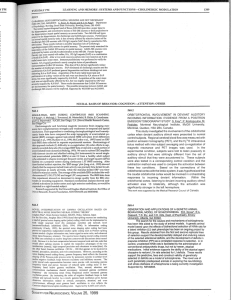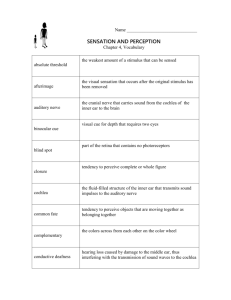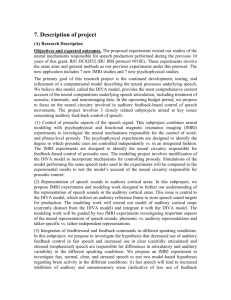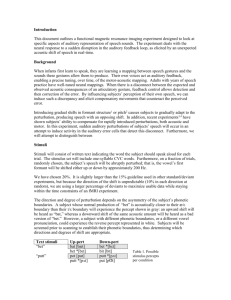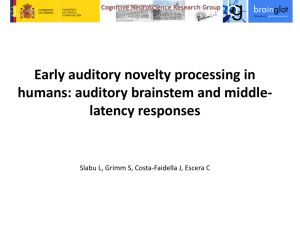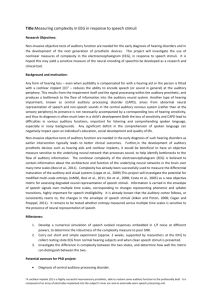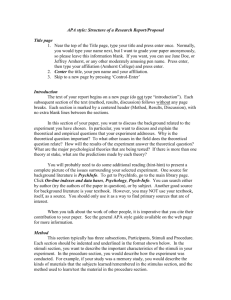Independent Component Analysis Participants. All experimental
advertisement
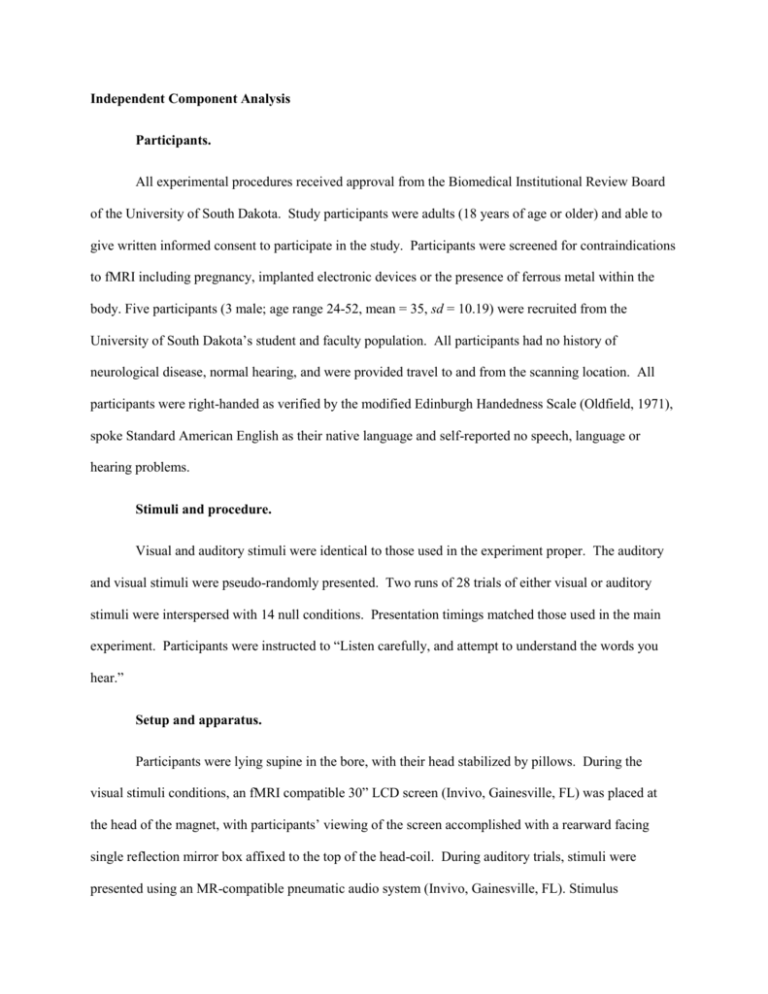
Independent Component Analysis Participants. All experimental procedures received approval from the Biomedical Institutional Review Board of the University of South Dakota. Study participants were adults (18 years of age or older) and able to give written informed consent to participate in the study. Participants were screened for contraindications to fMRI including pregnancy, implanted electronic devices or the presence of ferrous metal within the body. Five participants (3 male; age range 24-52, mean = 35, sd = 10.19) were recruited from the University of South Dakota’s student and faculty population. All participants had no history of neurological disease, normal hearing, and were provided travel to and from the scanning location. All participants were right-handed as verified by the modified Edinburgh Handedness Scale (Oldfield, 1971), spoke Standard American English as their native language and self-reported no speech, language or hearing problems. Stimuli and procedure. Visual and auditory stimuli were identical to those used in the experiment proper. The auditory and visual stimuli were pseudo-randomly presented. Two runs of 28 trials of either visual or auditory stimuli were interspersed with 14 null conditions. Presentation timings matched those used in the main experiment. Participants were instructed to “Listen carefully, and attempt to understand the words you hear.” Setup and apparatus. Participants were lying supine in the bore, with their head stabilized by pillows. During the visual stimuli conditions, an fMRI compatible 30” LCD screen (Invivo, Gainesville, FL) was placed at the head of the magnet, with participants’ viewing of the screen accomplished with a rearward facing single reflection mirror box affixed to the top of the head-coil. During auditory trials, stimuli were presented using an MR-compatible pneumatic audio system (Invivo, Gainesville, FL). Stimulus presentation and data recording were accomplished using a dedicated PC running custom LabVIEW software (LabVIEW 2012, National Instruments, Austin, TX). MRI acquisition and preprocessing. Imaging data were collected at Avera Sacred Heart Hospital, in Yankton, South Dakota. Conventional blood oxygen level dependent (BOLD) imaging techniques were used on a 3-Tesla wholebody Siemens Skyra scanner and integrated 20-channel birdcage RF coil (Siemens, AG). Functional MRI volumes were collected using a T2*-weighted, single-shot, gradient-echo, echo-planar imaging acquisition sequence, utilizing a sparse temporal sampling (Hall et al., 1999) slow event-related design (See Figure 2). This allowed for the presentation of the auditory and visual stimuli during the silent period between readouts of the magnetic resonance signal. Acquisition was transverse oblique, angled away from the eyes with an approximately 30-degree tilt away from the plane of the anterior and posterior commissures. Forty-two (the first three functional scans were not collected to allow for an equilibration of saturation effects) volumes were collected for each functional run, corresponding to one volume per trial. A total of four runs were collected (two visual and two auditory), for a grand total of 168 volumes of the whole brain [acquisition time per volume, 2000 ms; slice thickness 4 mm; in-plane resolution, 3.44mm x 3.44mm; matrix size 64 X 64mm; FOV 220 X 220 mm; gap thickness 1mm; flip angle 70o]. Following functional imaging, a high-resolution T1-weighted MPRAGE [TR, 2300 ms; TE, 2.13ms; FOV 192 X 256 X 256; .9 mm x .9375mm x .9375 mm voxels; flip angle 9o] was collected for each participant. To localize auditory-related areas to constrain the random effects (RFX) general linear model (GLM) group voxelwise analysis, independent component analysis (ICA) was performed using the BrainVoyager QX ICA plug-in (Version 2.6, Brain Innovation, Maastricht, The Netherlands). Following slice scan time correction, fMRI preprocessing steps included: 3D motion correction (aligning each volume to the volume of the functional scan closest to the anatomical scan), linear trend removal, and spatial smoothing using a Gaussian kernel with a full-width at half maximum (FWHM) of 8mm. Structural and functional data were rotated so that the axial plane passed through the ACPC space and then transformed to Talairach space. Self-organizing group-level ICA (Esposito et al., 2005) was performed by first creating ICA decompositions of each single-subject data set using the FastICA algorithm (Hyvarinen, 1999). To reduce the computational load, a 3-d mask limiting the analysis to grey matter was defined in Talairach space and applied to the image time-series in order to exclude voxels outside of the brain and within white matter.
